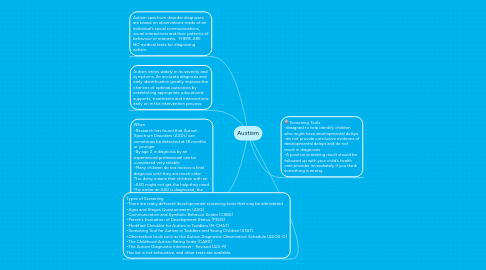Austism
作者:kate van ryn

1. When -Research has found that Autism Spectrum Disorders (ASDs) can sometimes be detected at 18 months or younger -By age 2, a diagnosis by an experienced professional can be considered very reliable -Many children do not receive a final diagnosis until they are much older. This delay means that children with an -ASD might not get the help they need. The earlier an ASD is diagnosed, the sooner treatment can begin.
2. Types of Screening -There are many different developmental screening tools that may be admistered •Ages and Stages Questionnaires (ASQ) •Communication and Symbolic Behavior Scales (CSBS) •Parent’s Evaluation of Development Status (PEDS) •Modified Checklist for Autism in Toddlers (M-CHAT) •Screening Tool for Autism in Toddlers and Young Children (STAT) •Observation tools such as the Autism Diagnostic Observation Schedule (ADOS-G) •The Childhood Autism Rating Scale (CARS) •The Autism Diagnostic Interview – Revised (ADI-R) This list is not exhaustive, and other tests are available.
3. Autism varies widely in its severity and symptoms. An accurate diagnosis and early identification greatly improve the chances of optimal outcomes by establishing appropriate educational supports, treatments and interventions early on in the intervention process.
4. Autism spectrum disorder diagnoses are based on observations made of an individual’s social communications, social interactions and their patterns of behaviour or interests. THERE ARE NO medical tests for diagnosing autism.
5. Screening Tools -designed to help identify children who might have developmental delays. -do not provide conclusive evidence of developmental delays and do not result in diagnoses -A positive screening result should be followed up with your child’s health care provider immediately if you think something is wrong.


